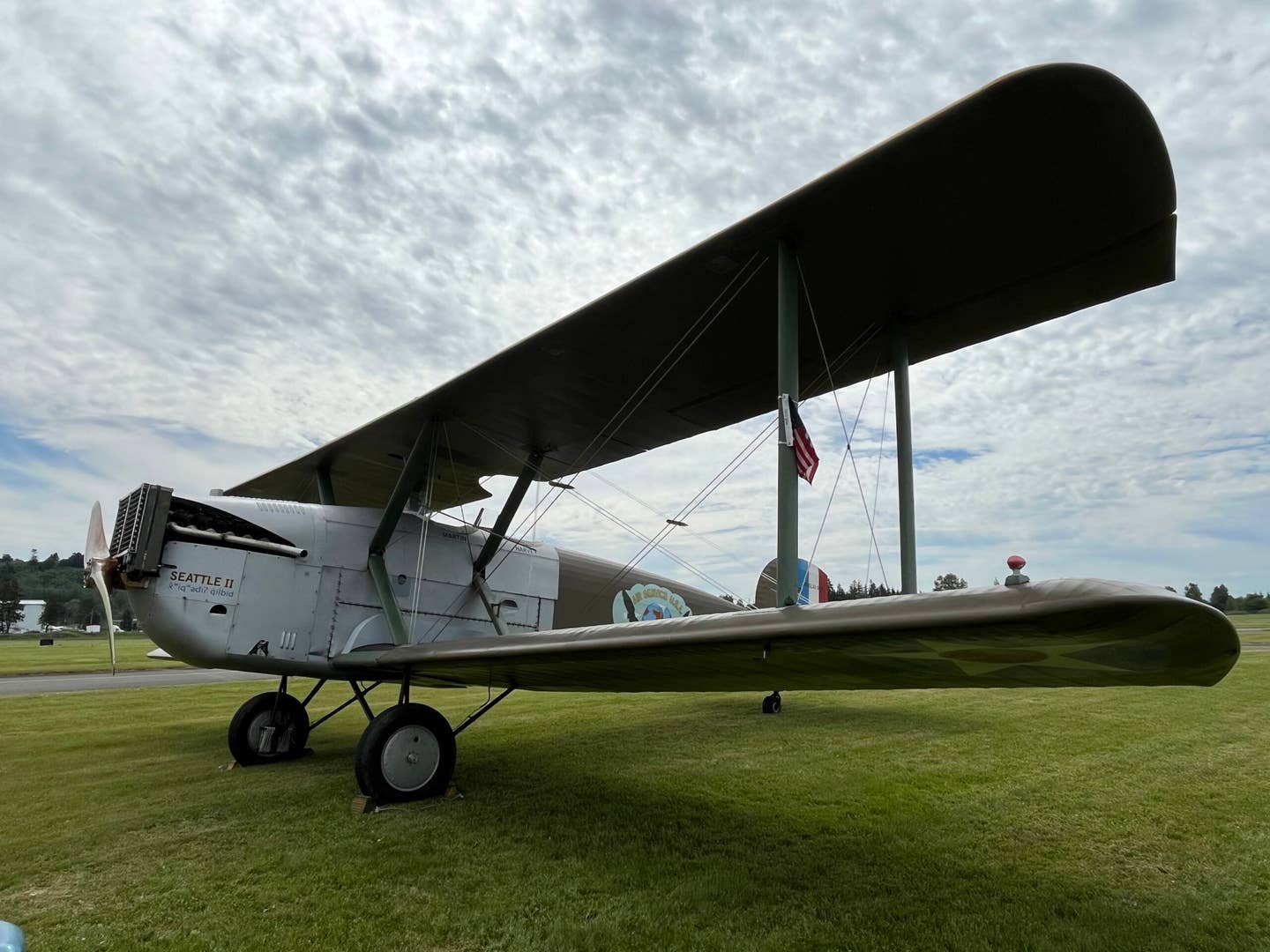Rare Hawker Tempest Takes to the Skies After Restoration
Experts say this Mk.II version is the first Tempest to fly in more than 50 years.

The restored Hawker Tempest MK.II takes off from a grass strip.. [Courtesy: Sywell Aviation Museum]
The list of airworthy, flying warbirds recently got longer with the addition of a particularly rare machine. A Hawker Tempest made its first flight from Sywell Aerodrome (EGBK) in Northamptonshire, England, after a lengthy restoration by Anglia Aircraft Restoration Ltd.
The Tempest, a late-World War II model designed to succeed the Hawker Typhoon, is a rare bird that came in many versions. The restored model that flew earlier this month is a Mk.II, a variant we almost never see. Its Bristol Centaurus radial engine sets it apart visually from the models powered by the Napier Sabre engine that saw combat toward the end of the war. The Mk.IIs arrived too late to see action.
The flight at Sywell marked the first for any version of the Tempest in more than 50 years, according to the Sywell Aviation Museum.
Like the Grumman Bearcat and other fighter aircraft that emerged too late to participate in the war, the Tempest Mk.II was among the most powerful and represented the pinnacle of piston-engine fighter development.
This Tempest, designated MW763, left the factory in 1945 and had been built in response to an U.K. Air Ministry contract. Times were changing, though, and the aviation industry had shifted almost completely toward development of jet aircraft. Piston fighters, no matter how advanced, garnered little attention once the jet age began.
In the late 1940s, this and other Mk.IIs were refitted for use in the Indian Air Force, which was just getting organized. Some, including this one, were used as target tugs later in their careers, according to the Sywell museum.
By the mid-1950s, India had retired most of its Tempests, though many languished at airfields for decades. Salvagers eventually collected MW763, and the aircraft changed ownership many times over the years before going through the restoration process.

Subscribe to Our Newsletter
Get the latest FLYING stories delivered directly to your inbox






